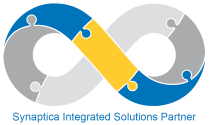The Elastic London User Group Meetup this week was slightly unusual in that the talks focussed not so much on Elasticsearch but rather on how to scale the systems around it using other technologies. First up was Paul Stack with an amusing description of how he had worked on scaling the logging infrastructure for a major restaurant booking website, to cope with hundreds of millions of messages a day across up to 6 datacentres. Moving from an original architecture based on SQL and ASP.NET, they started by using Redis as a queue and Logstash to feed the logs to Elasticsearch. Further instances of Logstash were added to glue other parts of the system together but Redis proved unable to handle this volume of data reliably and a new architecture was developed based on Apache Kafka, a highly scalable message passing platform originally built at LinkedIn. Kafka proved very good at retaining data even under fault conditions. He continued with a description of how the Kafka architecture was further modified (not entirely successfully) and how monitoring systems based on Nagios and Graphite were developed for both the Kafka and Elasticsearch nodes (with the infamous split brain problem being one condition to be watched for). Although the project had its problems, the system did manage to cope with 840 million messages one Valentine’s day, which is impressive. Paul concluded that although scaling to this level is undeniably hard, Kafka was a good technology choice. Some of his software is available as open source.
Next, Jamie Turner of PostcodeAnywhere described in general terms how they had used Apache Cassandra and Apache Spark to build a scalable architecture for logging interactions with their service, so they could learn about and improve customer experiences. They explored many different options for their database, including MySQL and MongoDB (regarding Mongo, Jamie raised a laugh with ‘bless them, they do try’) before settling on Cassandra which does seem to be a popular choice for a rock-solid distributed database. As PostcodeAnywhere are a Windows house, the availability and performance of .Net compatible clients was key and luckily they have had a good experience with the NEST client for Elasticsearch. Although light on technical detail, Jamie did mention how they use Markov chains to model customer experiences.
After a short break for snacks and beer we returned for a Q&A with Elastic team members: one interesting announcement was that there will be a Elastic(on) in Europe some time this year (if anyone from the Elastic team is reading this please try and avoid a clash with Enterprise Search Europe on October 20th/21st!). Thanks as ever to Yann Cluchey for organising the event and to open source recruiters eSynergySolutions for sponsoring the venue and refreshments.














